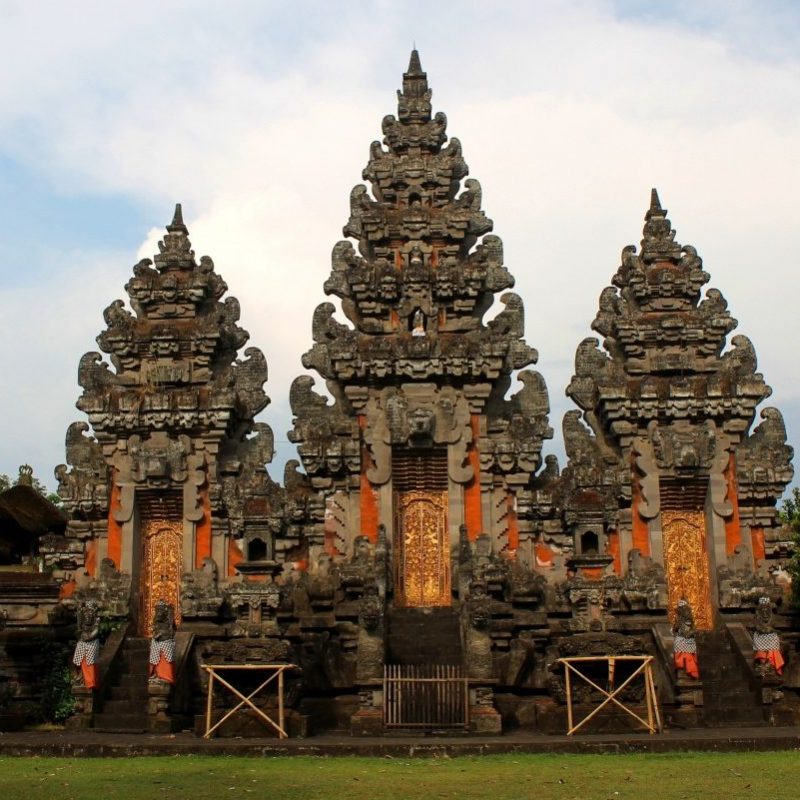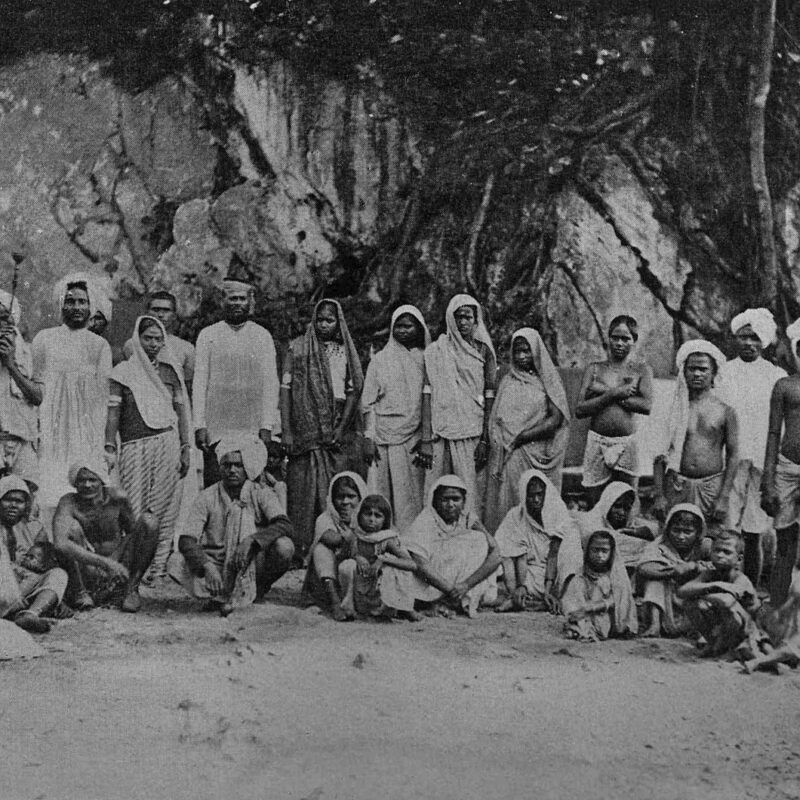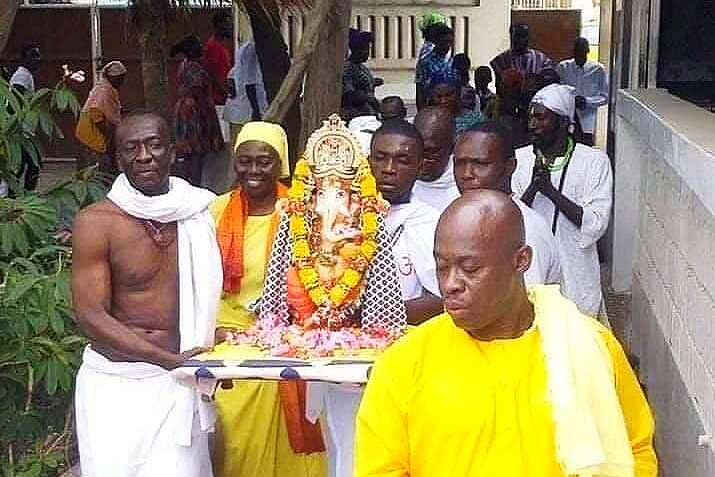
Over the years, Bali has become Indonesia’s main tourist destination.
While it’s easy to assume that this is probably due to the island’s warm weather, scenic oceans, and forested volcanic mountains, making it a picture of paradise, anyone who’s been to Bali knows the city’s unique charm is about more than just natural beauty — it’s about the cultural magnificence of its main religion, Balinese Hinduism.
Home to thousands of temples abuzz with throngs of devotees practicing a myriad of colorful customs, rituals, and ceremonies, Bali is roughly 90 percent Hindu, making it a religious enclave in a country that contains the world’s largest Muslim population, begging the question as to how such a reality came to be.
According to the paper Hindu Rituals in India and Bali by Balinese Historian Ni Wayen Pasek Ariati, Hindu culture — originally from the mainland of India — is believed to have first been brought to the Indonesian Archipelago during the first millennium CE, “a time when Buddhist monks and priests of the Shaiva form of Hinduism joined the voyages of seafaring merchants who traveled to and from the archipelago as part of the trading networks that connected China with India, the mid-east, and Europe via the archipelago.”
Ariati says Hinduism subsequently prospered on the islands roughly from the fourth to the late 15th century, but was mostly replaced by Islamic culture as Islamic trading networks began influencing the politics and economics of the archipelago. In spite of this, Hindu culture survived in some areas of Indonesia, continuing to thrive and evolve in places like Bali.
However, because the island is more than 3,600 miles southeast of India, Balinese Hinduism took on its own form, manifesting as a result of the fusion of Indian Hindu teachings/customs and local Balinese beliefs/traditions.

Like followers of Hinduism as practiced in India, Balinese Hindus believe that all of existence, including non-living things, has a spiritual essence. Hence, also like followers of Hinduism as practiced in India, Balinese Hindus believe every aspect of existence has a presiding god or goddess that can and should be prayed to for the service they provide in the functioning of said aspect. Though different in name, many Balinese deities are parallel in function to those worshiped in India. Some examples include:
- Dewi Danu: the goddess of water (known as Varuna in India);
- Dewi Sri: the goddess of rice, wealth, and fertility (known as Lakshmi in India);
- Dewi Ratih: the lunar goddess of beauty (known as Chandra in India);
- Batara Kala: the god of time, destruction, and the underworld (known as Kali in India).

Generally speaking, much of the practices in Balinese Hinduism can be encapsulated by five categories of spiritual rituals called Panca Yadnya, literally translated as “five holy offerings.” They are:
- Dewa Yadnya (rituals for the gods): According to Hindu texts, everyone originates from a supreme spiritual source called Brahman. Balinese Hinduism’s version of this spiritual source is known as Acintya (“the inconceivable”), as well as Sang Hyang Widhi Wasa (“the Divine Order”), and Sang Hyang Tunggal (“the Divine Oneness”). Dewa Yadnya are rituals performed to the different gods and goddesses of Balinese Hinduism who are believed to be various manifestations of Acintya. Such rituals, in the form of prayers, dances, and other methods of worship, take place on all the major holidays and functions in temples and even many homes, as a way of connecting to the Divine through devotion and gratitude;
- Manusa Yadnya (life cycle rituals): Hinduism teaches that every action performed and perceived by an individual leaves a samskara or impression on the deep and subtle structure of that person’s mind. Because these impressions are said to contribute in forming a person’s impulses, habits, tendencies, innate temperament, and general nature, major life events, like marriage, are considered particularly significant samskaras that have powerful impacts on a person’s consciousness. Hindu teachings therefore say such events can also have powerful spiritual impacts on people if they are conducted as religious ceremonies. In tow with this belief, the Balinese conduct their own set of unique religious ceremonies for the significant occasions of a person’s life;
- Pitra Yadnya (rituals for the ancestors): Similar to followers of Hinduism as practiced in India, Balinese Hindus believe the performance of post-mortem rituals, particularly cremation, can be vital in helping the deceased let go of the physical world and attain spiritual liberation. Furthermore, Balinese Hindus also build shrines dedicated to the ancestors, who they pray to for guidance and protection;
- Bhuta Yadnya (rituals for the spirits): Just as devotees of Hinduism as practiced in India believe in the existence of entities in realms beyond the physical, Balinese Hindus also believe such beings exist, and say it’s important to coexist with them by treating the space we share on earth — like the forests, oceans, and rivers — with the utmost care and respect. It’s also common for Balinese Hindus to appease such entities with periodic offerings that often include some combination of coconut leaves, flowers, fruits, and rice;
- Rsi Yadnya (rituals for the priests): It goes without saying that the priests and other genuine religious leaders who provide spiritual guidance for people are considered invaluable to society. Recognizing this, Balinese Hindus make sure such leaders are supported by providing them regular offerings of various foods and monetary donations.

Practically no day goes by in Bali without the occurrence of at least one religious ceremony. While this might appear superfluous to some, Balinese Hindus believe these ceremonies are, in fact, necessary to maintain harmony and balance amongst humans, nature, and the gods. In fact, the first day of the Balinese new year, Nyepi, is observed by all on the island with a full day of silence, fasting, and meditation, as a way of getting better in touch with the Divine that connects everyone and everything.
Attaining peace and harmony can only really occur when one cultivates love and respect for others. Such love is expressed through service, and real service takes sacrifice. Thus, yadnya, or acts of sacrifice, is the process of attaining actual harmony, and so Balinese Hindus have built a rich and colorful culture on the foundation of such sacrifice.
Even amidst all of its natural beauty, it’s this culture that makes Bali a truly extraordinary place to visit.

If you’re ever on the island, the 400-foot Garuda Wisnu Kencana statue and the Uluwatu Temple dedicated to Rudra are particularly emblematic of Bali’s majestically spiritual heritage.







































